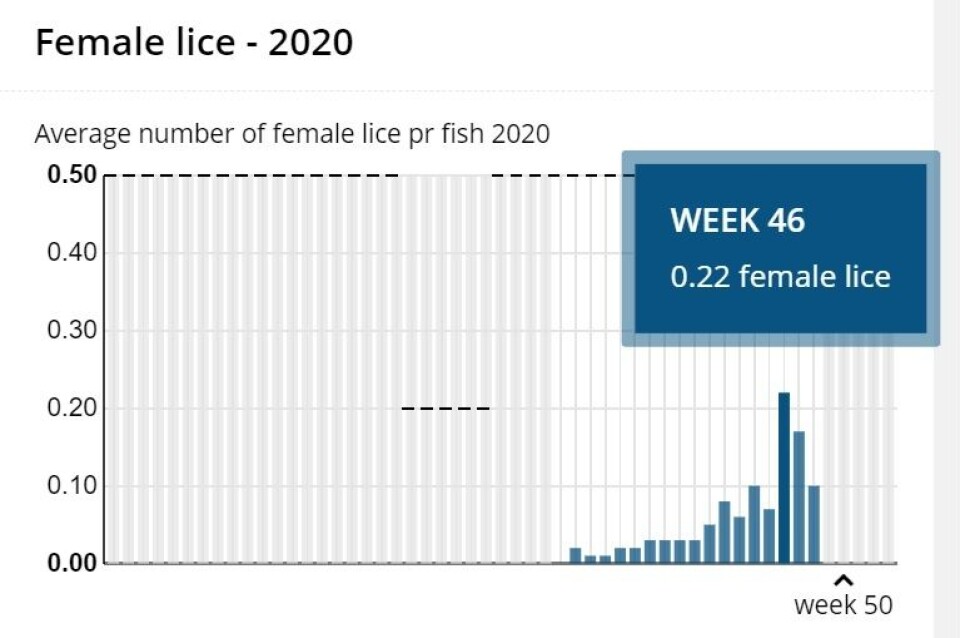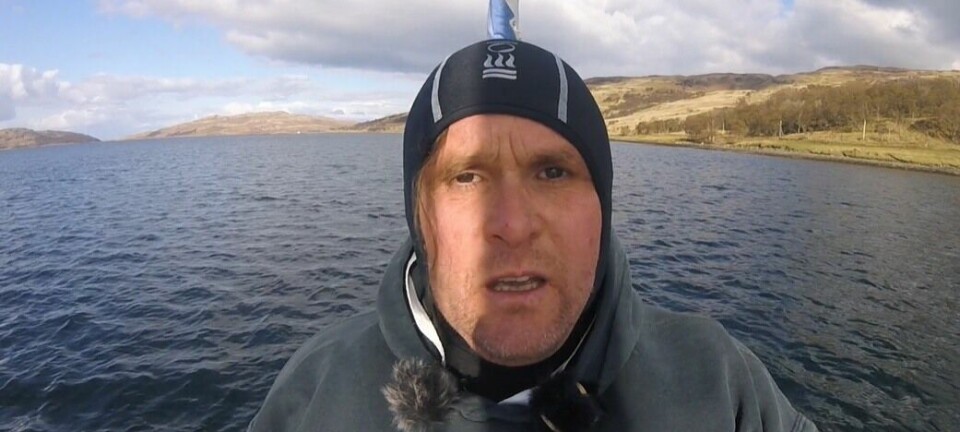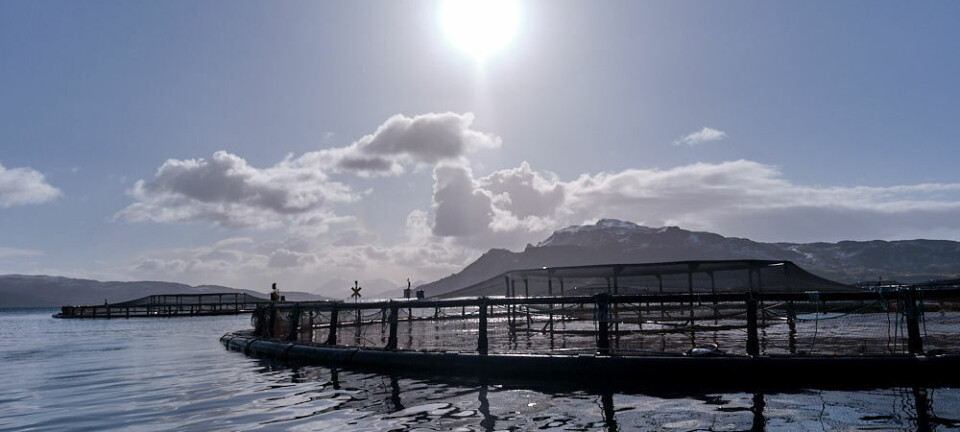
Early lice problems for Havfarm
Salmon farmer Nordlaks has resorted to medicinal lice treatment of fish in its giant Havfarm after two months of operation, Norwegian news outlet E24 reports.
The company had hoped to avoid the use of medicines. It was believed the Havfarm’s hull would provide a shield against the lice, which predominantly live in the top 10 metres of the water column, and that siting the farm in a high energy site would also reduce prevalence of the parasites.
The first Havfarm was delivered from the Yantai shipyard in China in June and is now anchored off Ytre Hadseløya in Vesterålsfjorden. In September, 2.3 million fish were released in what has become the world’s largest salmon farm.

Climbed steadily
Statistics from Barentswatch show that the number of salmon lice in the facility has climbed steadily throughout the autumn, reaching 0.22 adults females per fish in week 46 (November 9-15). This is below the limit where treatment is compulsory.
In November, chemical lice treatment was carried out at the Havfarm by feeding the salmon with feed with the insecticide teflubenzuron.
Toine C Sannes, fisheries policy spokesperson for Norway’s Green Party, told E24: “This is playing Russian roulette with the marine ecosystem. A lice infestation of 2.3 million individuals, with delousing with a chemical that harms crustaceans, has enormous consequences.”
Risk to crustaceans
According to the Scottish Environment Protection Agency (SEPA), teflubenzuron is classed as having low toxicity for mammals, fish and birds. Other aquatic organisms (particularly crustaceans and those living in sediments) may however suffer adverse effects if exposed.
The drug has low solubility in water, and binds to soil particles, where it is broken down by microbial activity. This usually takes a few weeks, depending on the soil type. SEPA says it is not considered likely that teflubenzuron has any impact on the global environment.



















































